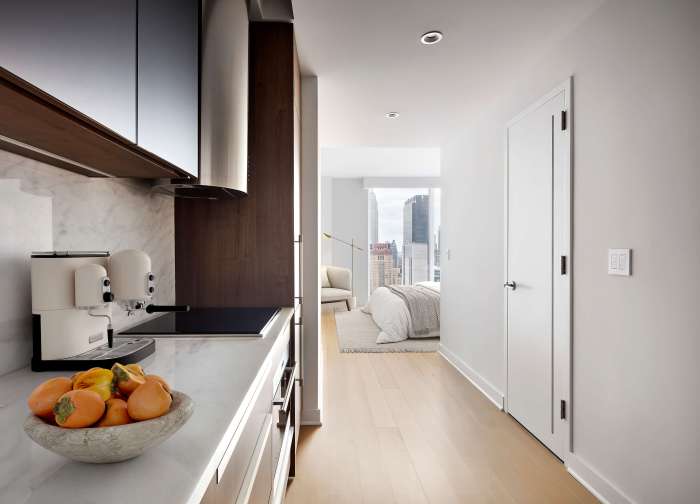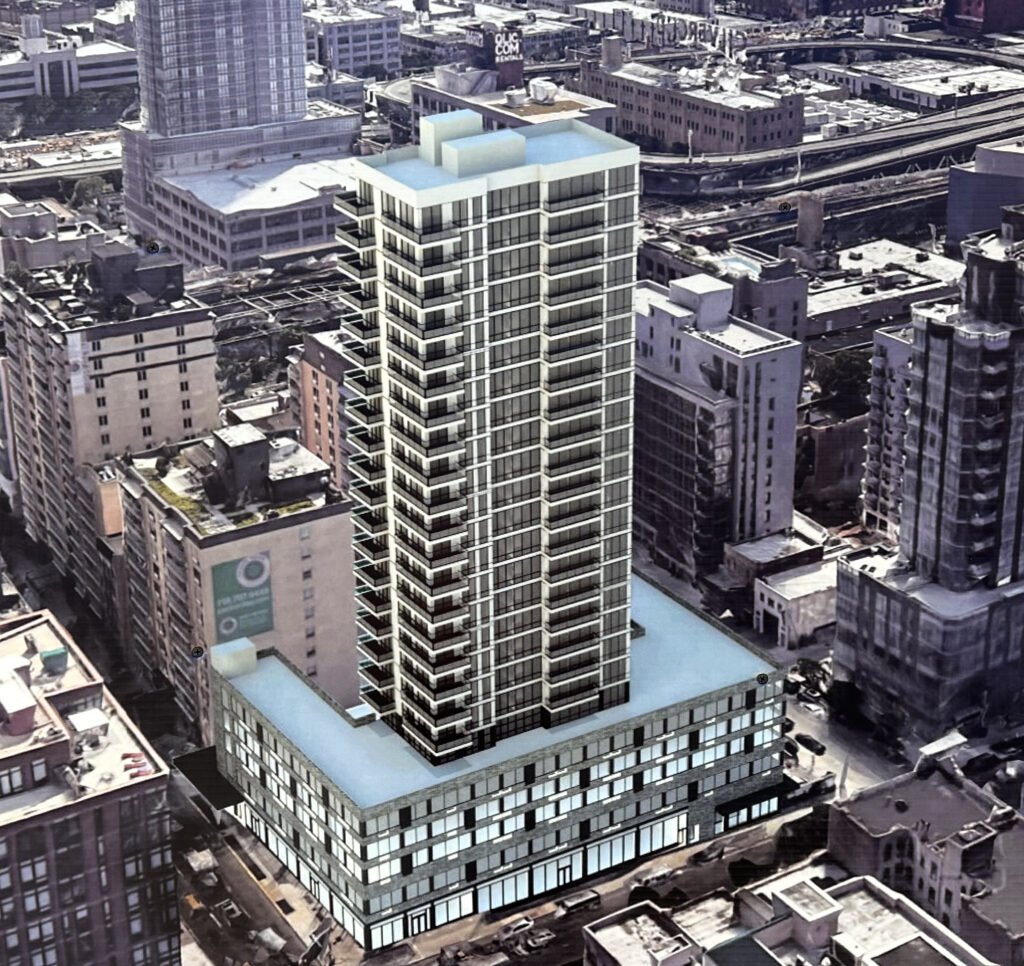
It’s an unwritten New York proverb that where artists go, cafes and condos will follow — so it should come as no surprise that the Brooklyn Navy Yard has exploded as a vital creative hub, or that the surrounding streets have sprung up desirable real estate.
The 300-acre shipyard jutting into the East River between Vinegar Hill and Williamsburg presented itself as a perfect match for papermaking nonprofit Dieu Donné when rent at its former Manhattan digs predictably skyrocketed. The organization now takes up a sprawling studio inside the yard, where workers create colorful paper by hand, offer classes and host artists through residency programs.
But it wasn’t just the space that drew them, said acting director John Shorb — it was the opportunity to be a part of a creative ecosystem.
“We came to the yard with the hope of this sort of creative collaboration,” said Shorb, an artist who also maintains his own studio in the yard. “Already seeing a list of different artists and organizations in the yard was an indicator — and it’s close to Manhattan still, but it’s got this totally this feeling of openness and expansiveness because you’re right on the water.”

That hope has come to fruition. The nonprofit has collaborated with its neighbor, a letter press company called Woodside Press — an opportunity facilitated by the communal environment, said Shorb.
Shorb noted that in the roughly two years Dieu Donné has been in the yard, the surrounding area has transformed. Across the street on Flushing Avenue, the hip Cooler Gallery opened its doors, as well as artist workspace Recess on Washington.
“I definitely think more creative stuff has come in the neighborhood — more creative organizations, more creative people,” said Shorb.
The Navy Yard is a decidedly creative space, even if the majority of its tenants do not fall into the narrow category of visual artistry. Out of the Navy Yard’s 400 tenants, 50 are studio artists, painters or sculptors, according to David Ehrenberg, president and CEO of the Brooklyn Navy Yard Development Corporation. But outside that narrow scope, almost all the yard’s occupants are creatives.
“I would put almost all of our tenants here in the class of creative company who are at the intersection manufacturing or design or technology,” said Ehrenberg.

Ehrenberg agreed the surrounding business boom was in response to the activity at the Navy Yard.
“Local property owners are certainly seeing what’s going on here and they’re reacting,” he said. “That’s all to the good for us … I believe when you’re talking about a city and an economy, success breeds more success.”
The yard, in its roughly 200-year history, has always been a vital hub for industry. It was established in 1801 as a naval shipbuilding facility, and saw the launch of legendary warships. The space also saw the launch of tens of thousands of jobs. During World War II, the yard saw peak activity at 70,000 workers.
The yard shut down in 1966 when it was sold to the City of New York, but reopened in 1969 as an industrial park managed by a nonprofit that would, in the 1980s, be replaced by the Brooklyn Navy Yard Development Corporation. It was in the ‘80s that the BNYDC began packing the sprawling industrial facilities with creative tenants, cutting up the space once used for shipbuilding to accommodate smaller operations.
Painter Elizabeth Yamin moved in around that time, in 1989. It was emptier back then, she said, with few other artists taking over studios.

“The pace of change and construction [has] just completely taken off in the last couple of years,” she said. “I don’t know what’s going to happen … It’s obviously going to become a city in its own right almost. When I used to come it was so deserted.”
The pace, it seems, started to pick up around 2011, when Building 92 opened its doors. It included an exhibition, visitors center and employment center, which has helped link locals to jobs at the yard. The pace has only escalated since, with a host of renovations in recent years including the ongoing remodeling of the massive Building 77, once a storage facility that now holds an in-progress food court, including a Russ & Daughters.
New residential developments began to spring up around the yard as well. The Navy Green development brought condos, some below-market-rate.
The current expansion is supposed to bring 10,000 jobs to the yard by 2020, and the yard is now gearing up for a $2.5 billion "master plan" to increase the job count to 30,000. Ostensibly, the plan will also bring in a flood of creative and tech companies eager to take up space there (WeWork is partnering with the Navy Yard for the construction of one site in the expansion). And the addition of a ferry stop at the yard will surely increase accessibility and foot traffic.
Yamin expressed some trepidation about the expansion.
“The changes are really going to be immense,” she said. “For the first time they’ll have a huge influx of people who aren’t actually tenants or working in the yard. It’s a little bit of a different thing.”
Yamin was quick to note the corporation treated longtime tenants well and was fair with incremental rent increases.
But the change is inevitable — both for the Navy Yard and the surrounding neighborhood, noted a real estate agent familiar with the area. Homeowners and renters will see the dynamic mixture of old and new, art and technology, and want to be near it.
“It’s all about becoming — it’s about seeing ahead of what’s currently there,” said Rodney Ripps of Halstead Real Estate. “What’s there is great currently, but it’s going to be even better.
“My whole life experience has been wherever artists go, everything follows.”

















